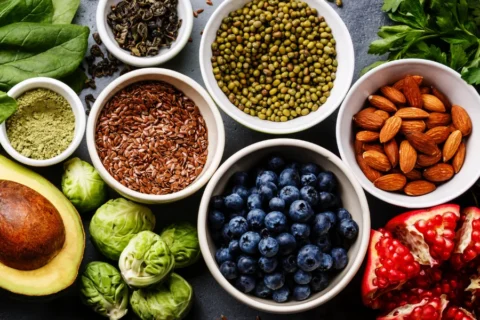2 months ago
Intrinsic Motivation: Unleashing Your Inner Drive
In the realm of Intrinsic Motivation, two primary types often come into discussion: intrinsic and extrinsic motivation. Understanding these concepts is crucial for enhancing personal and professional growth. Intrinsic motivation is the internal desire to complete a duty for the sheer pleasure and satisfaction derived from the activity itself rather than for some separable outcome like external rewards.
The Essence of Intrinsic Motivation

intrinsic vs extrinsic motivation stems from internal rewards such as the joy of learning something new, the satisfaction of completing a challenging task, or the pleasure of participating in a sport. This type of motivation is driven by an internal desire to engage in inherently rewarding activities. When you read a book because you enjoy the storyline or the knowledge you gain, you are experiencing intrinsic motivation.
Benefits of intrinsically motivated

intrinsic motives Offers numerous benefits that can positively impact various aspects of life:
1. Enhanced Learning and Creativity:
When people are intrinsically motivated, they are more likely to commit deeply to the material, leading to better understanding and retention of information. This type of motivation fosters creativity and innovation, as individuals are driven by their curiosity and interest.
2. Sustained Engagement:
Intrinsically rewarding Activities are more likely to be pursued over the long term. This sustained engagement can lead to mastery and expertise in a particular field or skill.
3. Improved Well-being
Engaging in activities that fulfill intrinsic desires can lead to greater happiness and life satisfaction. People feel a sense of accomplishment and pride when they complete tasks that they find personally meaningful.
4. Better Performance:
Motivation often leads to higher quality work and better performance. When employees feel motivated from within, they are more determined, productive, and ready to go the extra mile.
Factors That Promote Motivation Intrinsic

Several factors can help foster intrinsic motivations:
- Autonomy: Allowing individuals to have control over their tasks and decisions can enhance their intrinsic motivation. When people feel they have a choice, they are more likely to be internally motivated.
- Competence: Providing opportunities for individuals to develop and demonstrate their skills can boost intrinsic motivation. Challenges that are relatively easy and easy can enhance a sense of competence.
- Relatedness: Building connections and fostering a sense of belonging can also improve intrinsic motivation. When individuals feel connected to others and believe that their work has value to the community, they are more likely to be intrinsically motivated.
Intrinsic Motivation vs. Extrinsic Motivation

Comprehending the distinction between intrinsic and extrinsic motivation is crucial. Extrinsic motivation guides to committing a task to earn a reward or avoid punishment. External motivators such as money, grades, or praise are the driving factors. While extrinsic rewards can be effective in certain situations, they may not lead to long-term engagement or satisfaction.
For instance, an employee might work hard to receive a bonus (extrinsic motivation), but once the reward is achieved, their motivation may wane. On the other hand, if the same employee finds the work itself exciting and fulfilling (intrinsic motivation), they are likely to remain engaged and perform well consistently.
Practical Applications of Intrinsic Motivations
Intrinsic motivation can be harnessed in various settings to enhance performance and satisfaction:
Education:
Teachers can promote intrinsic motivations by offering students choices, providing meaningful feedback, and creating a supportive learning environment. Encouraging students to pursue topics they are passionate about can lead to deeper engagement and better academic outcomes.
Workplace:
Employers can foster motivation by granting employees autonomy, recognizing their efforts, and creating opportunities for professional growth. When employees feel their work is valued and aligns with their interests, they are more likely to be motivated and productive.
Personal Development:
Individuals can cultivate intrinsic motivations by setting personal goals that align with their interests and values. Hiring in hobbies and activities that bring joy and satisfaction can enhance overall well-being and personal growth.
Practical Applications of Intrinsic Motivations

Fostering Intrinsic Motivations
To foster intrinsic motivation, it is essential to complete an environment that supports autonomy, competence, and relatedness:
Set Intrinsic Goals:
Focus on setting inherently rewarding goals. Instead of aiming for external rewards, pursue activities that bring personal satisfaction and joy.
Create a Supportive Environment:
Surround yourself with people who encourage and support your interests. A positive and nurturing environment can enhance motivation.
Embrace Challenges:
Take on tasks that challenge your abilities and provide opportunities for growth. Overcoming obstacles and achieving success in challenging activities can boost your sense of competence.
Reflect on Your Interests:
Spend time reflecting on what activities and tasks you find intrinsically rewarding. Engage in activities that align with your fixations and interests.
Conclusion of Practical Applications of Intrinsic Motivations
Motivation is a strong force that can drive individuals to achieve their best and find joy in their pursuits. By understanding and fostering motivation, we can enhance our learning, creativity, well-being, and overall performance. Whether in education, the workplace, or personal development, the power of motivation can lead to lasting success and fulfilment.
Embrace the activities that bring you joy, seek challenges that stimulate your growth, and create an environment that nurtures your intrinsic desires. By doing so, you can unlock the full potential of your motivation and experience the profound benefits it offers.
FAQs | Frequently Asked Questions
What are the benefits of intrinsic motivation?
Intrinsic motivation can enhance learning and creativity, sustain long-term engagement, improve well-being, and lead to better performance in various activities. It fosters more profound commitment and satisfaction.
What factors promote intrinsic motivation?
Factors that promote intrinsic motivation include autonomy (having control over one’s tasks), competence (feeling capable and skilled), and relatedness (feeling connected to others and having a sense of belonging).
Can extrinsic rewards diminish intrinsic motivation?
Yes, this phenomenon is known as the over justification effect. When external rewards are introduced for activities that are already intrinsically rewarding, they can reduce the individual’s inherent interest in the activity.
How can teachers promote intrinsic motivation in students?
Teachers can promote intrinsic motivation by providing students with choices, offering meaningful feedback, encouraging curiosity, and creating a supportive and engaging learning environment.
How can individuals cultivate their intrinsic motivation?
Individuals can cultivate intrinsic motivation by setting personal goals aligned with their interests, creating a supportive environment, embracing challenges, and reflecting on activities that they find intrinsically rewarding.
Why is intrinsic motivation important for personal development?
Intrinsic motivation is essential for personal development because it encourages individuals to pursue activities that they are passionate about, leading to greater satisfaction, improved skills, and overall well-being.
Facebook
Instagram
Whatsapp
Youtube
Latest News
COVID-19 Data Tracker – Centers for Disease Control
Bedlington Terrier Infectious Disease Care and Health
September 14, 2024 0
Nutrition
Evolving Science Changes the Way We Talk about Weight Loss
August 28, 2024 0
Physical Therapy
The Benefits of Alternating Ice and Heat: A Guide to Effective Therapy
Gluten-free Bread that Tastes Good? What I Learned from Trying Every Loaf
9 Home Remedies Backed by Science
August 18, 2024 0
You might also like
COVID-19 Data Tracker – Centers for Disease Control
Bedlington Terrier Infectious Disease Care and Health
September 14, 2024 0

Nutrition
Evolving Science Changes the Way We Talk about Weight Loss
August 28, 2024 0

Physical Therapy
The Benefits of Alternating Ice and Heat: A Guide to Effective Therapy
Gluten-free Bread that Tastes Good? What I Learned from Trying Every Loaf
9 Home Remedies Backed by Science
Effects of a Low Carbohydrate Diet on Energy Expenditure During Weight Loss Keeping
What is the Difference Between Vegan and Vegetarian? | Better Health Channel
Best Banana Bread Recipes and Baking Guide | Health Wellbeing
Best Superfoods to Boost a Healthy Diet
Pilates vs Yoga: What’s the Better Workout?
A 7-Day Gym Workout Routine To Help Meet Your Fitness Goals
Understanding the Power of Intrinsic Motivation
Performance Enhancing Drugs: Know the Risks
August 6, 2024 0

Physical Therapy
Why PRP Should Be Your First Choice for Injection Therapy in Treating
August 3, 2024 0













